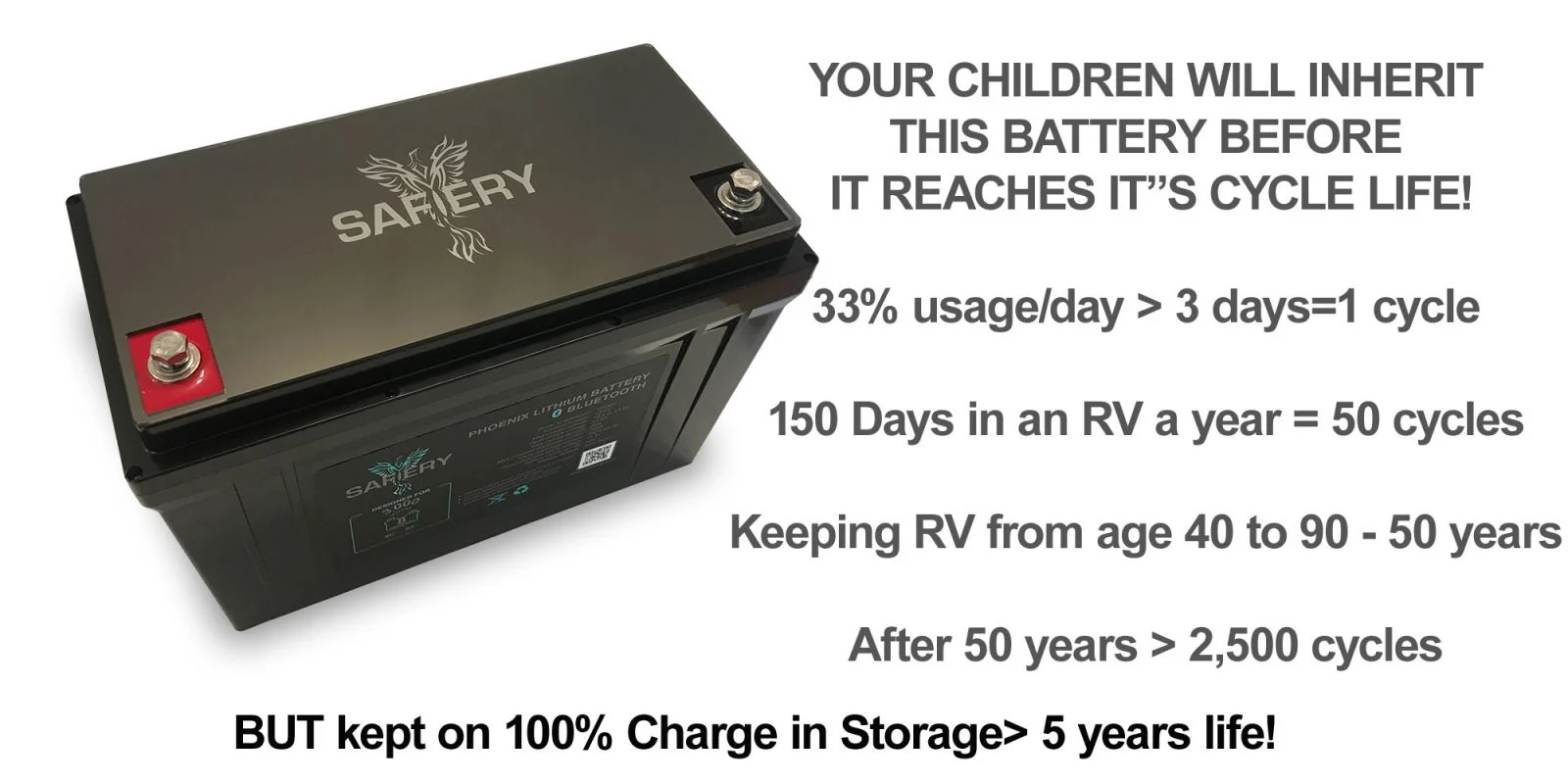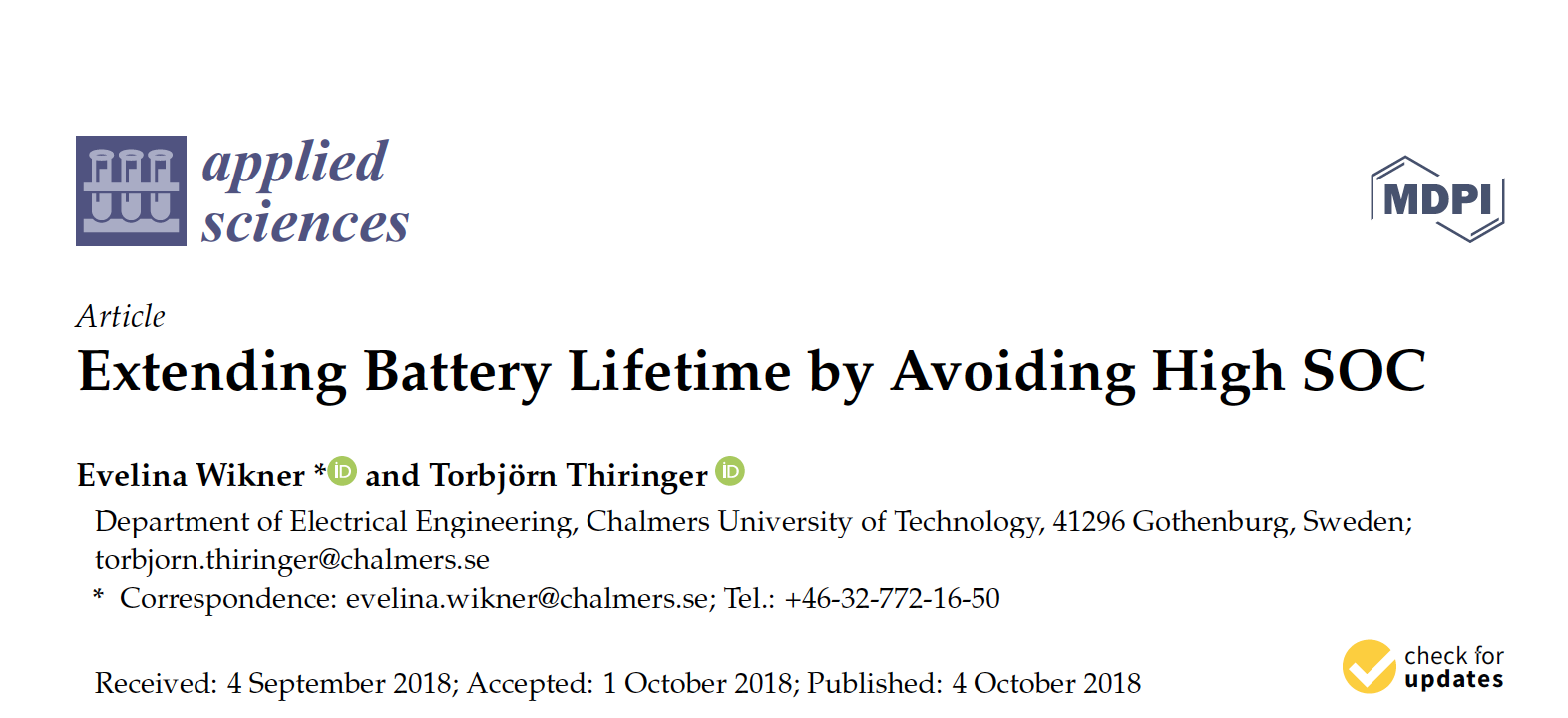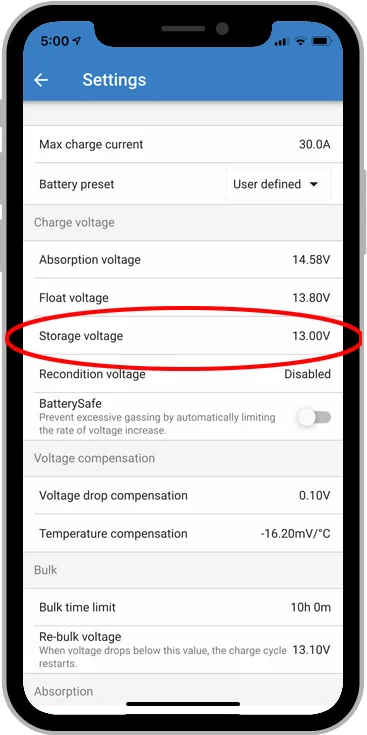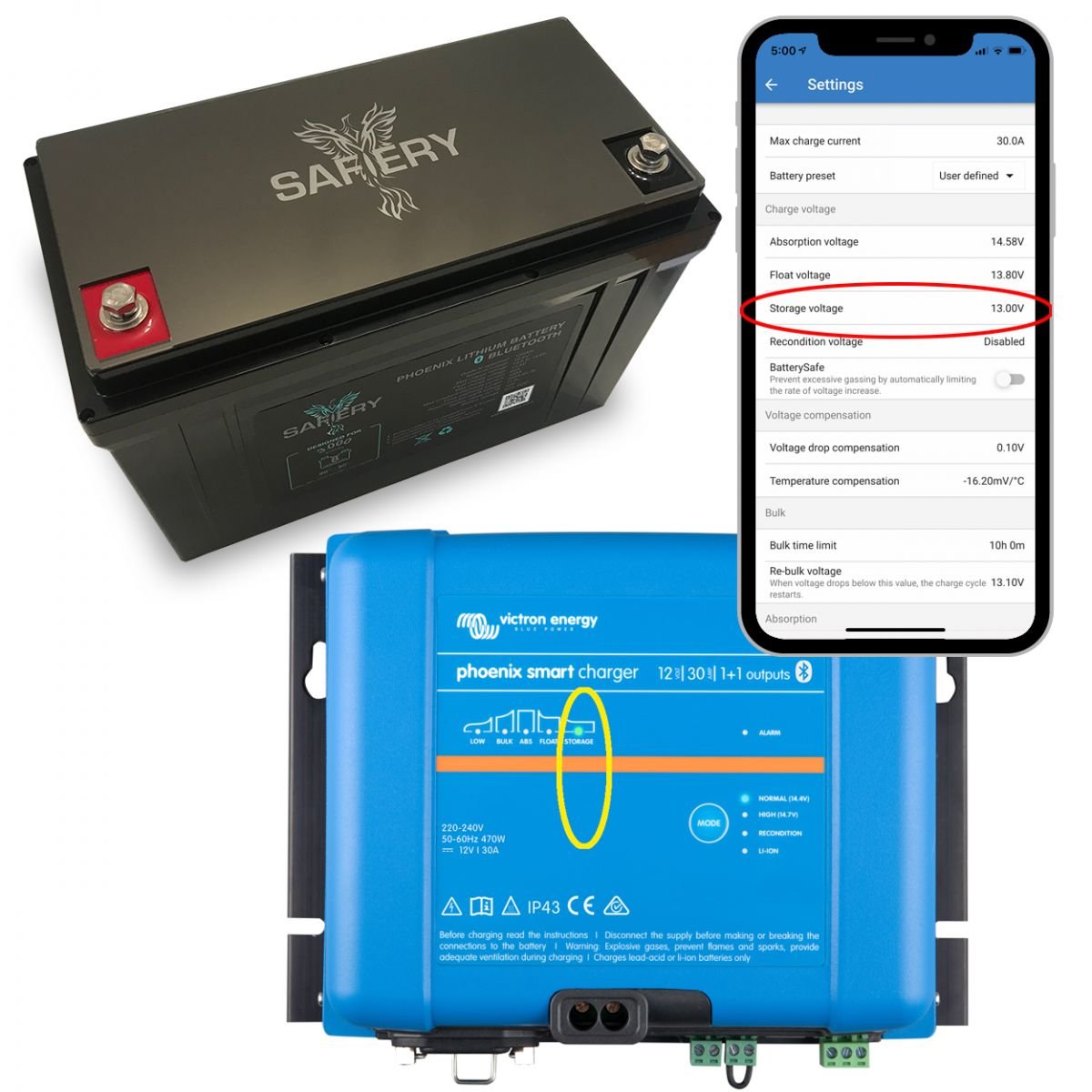SAFIERY UNIVERSITY
LITHIUM BATTERY CYCLES ARE A NON-ISSUE WITH SAFIERY BATTERIES

Battery cycle life is a very important issue with AGM and all batteries in the Lead Acid chemistry family. This is because the deeper the discharge of the battery, the shorter the life. It is not uncommon to see AGM batteries drop capacity significantly after 300 cycles when they have been routinely discharged by 100%.
Suppliers of batteries experienced with this expect the same with Lithium batteries. However, this is not the case, and here is why:
Firtly: Safiery Lithium Batteries show a “cycle” as when the depth of discharge accumulates to 100% over one or more cycles consecutively. So if battery use is 20% today and then 20% each day for the next 4 days, it will record as 1 cycle in the 5 day period.
Secondly: RV or camping/fishing applivations may only use Lithium batteries for 100 days a year. This is probably only 30-40 cycles.
So after 10 years, you will see 300-400 cycles on your Lithium battery. My own personal demo Safiery 125Ah is only showing 6 cycles in 6 months!
Safiery Lithium batteries are designed for 3,000 cycles at 80% depth of discharge.
Most people will never see 3,000 cycles in their lifetime with an RV.


However, there is one thing that will significantly shorten the capacity of a Lithium battery.
Leaving a Lithium battery on 100% charge while your RV or Boat is in storage will reduce its capacity. It can be as much at 10% capacity loss in a 6 month storage period. That makes for very expensive storage!
Here’s how to avoid this and prolong Lithium battery life.
Lithium batteries suffer from stress when kept at a high charge voltage. Keeping a Lithium battery at 100% state-of-charge for an extended time can be more stressful than cycling.
Storage Temperature | Charged to 40% – capacity loss after a year | Charged to 100% – capacity loss after a year |
0 °C | 2% | 6% |
25 °C | 4% | 20% |
40 °C | 15% | 35% |
60 °C | 25% | 40% |
Table above demonstrates capacity loss as a function of temperature and SoC.
Here is an excerpt from the University paper published in October 2018 in Sweden.
“The result showed that, when only considering ageing from different types of driving in small Depth of Discharges (DODs), using a reduced charge level of 50% SOC increased the lifetime expectancy of the vehicle battery by 44–130%.”


There is an easy solution with the new Victron Smart Battery charger.
This new Charger (just released in May 2019) has an Smart Storage Mode.
Storage Mode starts Automatically
Whenever the battery has not been subjected to discharge during the prior 24 hours, the battery charger switches to storage mode. In Storage Mode float voltage is reduced to a user defined level depending on the battery technology. For Lithium batteries 13V is recommended. This will keep the battery between 40-70% SOC depending on what devices are running.
Storage Mode Voltage set on Smartphone app
You can easily adjust the storage mode voltage depending on your particular application. There is no problem leaving a fridge on while in storage mode.
Other New Features in this New Battery Charger that prolong Lithium battery Life
Recover from a deep discharge at a low trickle current.
In the unlikely event that you suffer a deep discharge with your Lithium batteries, this smart charger can be switched on a Smartphone to recovery mode at a low trickle current. A low recovery current is absolutely essential as the internal resistance of a Lithium battery goes very low and an in-rush of a high current can cause damage. With this new charger, its easy to control this in the palm of your hand.
Restore to Bulk Mode Quickly if required.
Lithium batteries are reknown for holding a flat voltage level. At these consistent voltages, some chargers will go to sleep in float mode and may not full recover the Lithium battery to 100% after it has done some mild work.
This new battery charger has a “re-bulk” voltage set point that is user defined. When the battery measurement reaches this voltage, the charger will restore to full bulk charge mode.
Automatic voltage compensation
The charger compensates for voltage drop over the DC cabling by slightly increasing output voltage when the DC current increases.
If you are skeptical of overseas research and reports on this then conside the Q&A by CSIRO’s Guru on Lithium batteries. His comments are answers relating to smartphone batteries, but the replies are consistent for Lithium Iron Phosphate batteries in RV’s.
We asked one of CSIRO’s battery experts, Dr Adam Best, to bust some myths about lithium battery care and recommend the best ways of extending lithium battery life in our electronic devices.
1. Fully charging my lithium-ion battery regularly will improve its overall life span.
Answer: False
A lithium battery is in its most “stressed” state when fully charged. It is also the most unstable state for a battery to be in so you really should try to avoid fully charging your devices as much as possible.
2. My lithium battery is at its most stable when half charged.
Answer: True.
The battery is at its most stable between 50 – 75 % charged. It’s clearly impractical in real terms for a handheld device – watching your battery charge to 50% is about as exciting as watching paint dry.
3. Allowing my lithium battery to go completely flat each cycle is good for it.
Answer: False.
This is what we in the battery industry call a “deep discharge” and it can eventually wear down your battery. Try and avoid this where you can.
4. Frequent short charging of my lithium battery should be avoided.
Answer: False.
Batteries love being topped up so this won’t cause any harm at all.
Take our battery advice to avoid having to throw your phone away.
5. Fast charging is great and won’t hurt my battery’s life.
Answer: False.
Depending on the battery’s health, charging at high rates or currents can cause heating (due to resistive effects) and lead to faster loss of battery capacity. Short top-up charging is best. Only buy fast chargers recommended by the device supplier.
Read the original Article here: https://blog.csiro.au/power-up-our-battery-advice-free-of-charge/
Automation that will make your life easier, protect your investments and most importantly let you see what is going on. You are in control!

